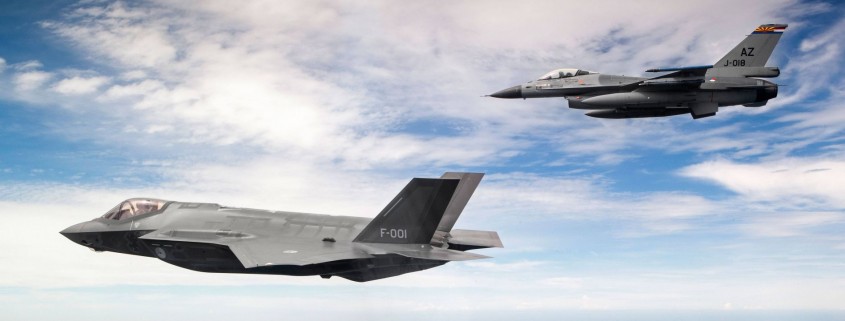Can the F-16 and F-35 execute joint operations? The DutchF-35 test team researched this at Edwards Air Force Base (USA) during a two-week exercise. The NLR supported the Netherlands Air Force Command (CLSK) in this endeavor.
Interoperability
The NLR was involved in a special exercise held in the USA as part of the F-35 project. For the first time, F-16s flew together with their successors of the 5th generation, the F-35s. The objective was to study the interoperability: can these two weapon systems operate jointly during a mission?
Scorecards
This exercise was held in the framework of the F-35 project’s operational test and evaluation phase – OT&E, for short. For this, the NLR developed a comprehensive test plan that included all aspects of the operational tests. This involved the NLR devising realistic operational scenarios and conducting post-flight interviews with the pilots. After each flight, the pilots filled in a scorecard that was aimed at determining the operational effectiveness, as well as the impact that collaboration had on the participants’ ‘situational awareness’. The NLR also collected video recordings that were made from the cockpit displays during the missions. The NLR will now analyze and review these images.
More effective
The F-35’s sensor package is much more comprehensive and advanced than that of the F-16. The F-35 can collect more information, and from greater distances, than the F-16. The test exercise revealed that, in combined future missions, the F-16 can piggyback on the sensors of its more advanced successor. “With one F-35 present, the F-16s are 100 times more effective,” one of the participating pilots stated in the Vliegende Hollander (the magazine of the Dutch Ministry of Defense).
Owing to its expertise in the field of operations, interoperability and operational testing, the NLR was able to successfully support these tests.


